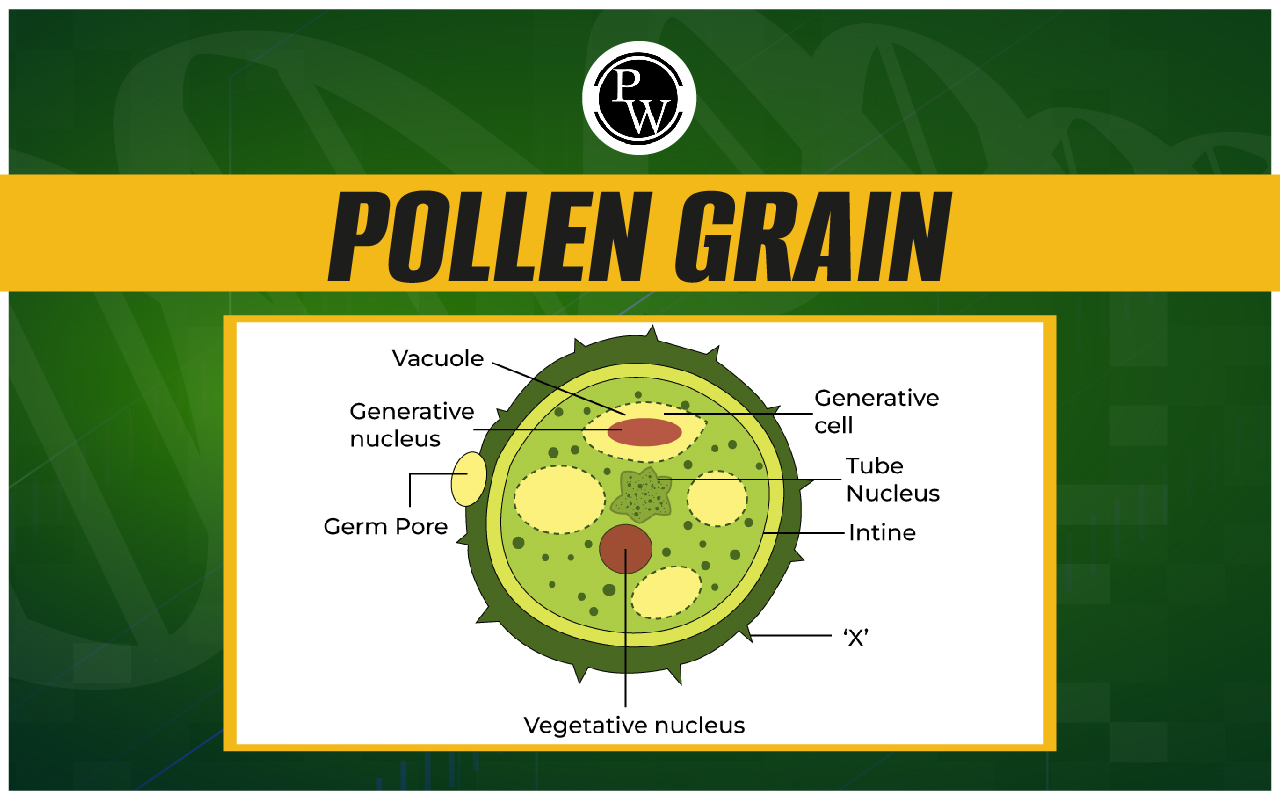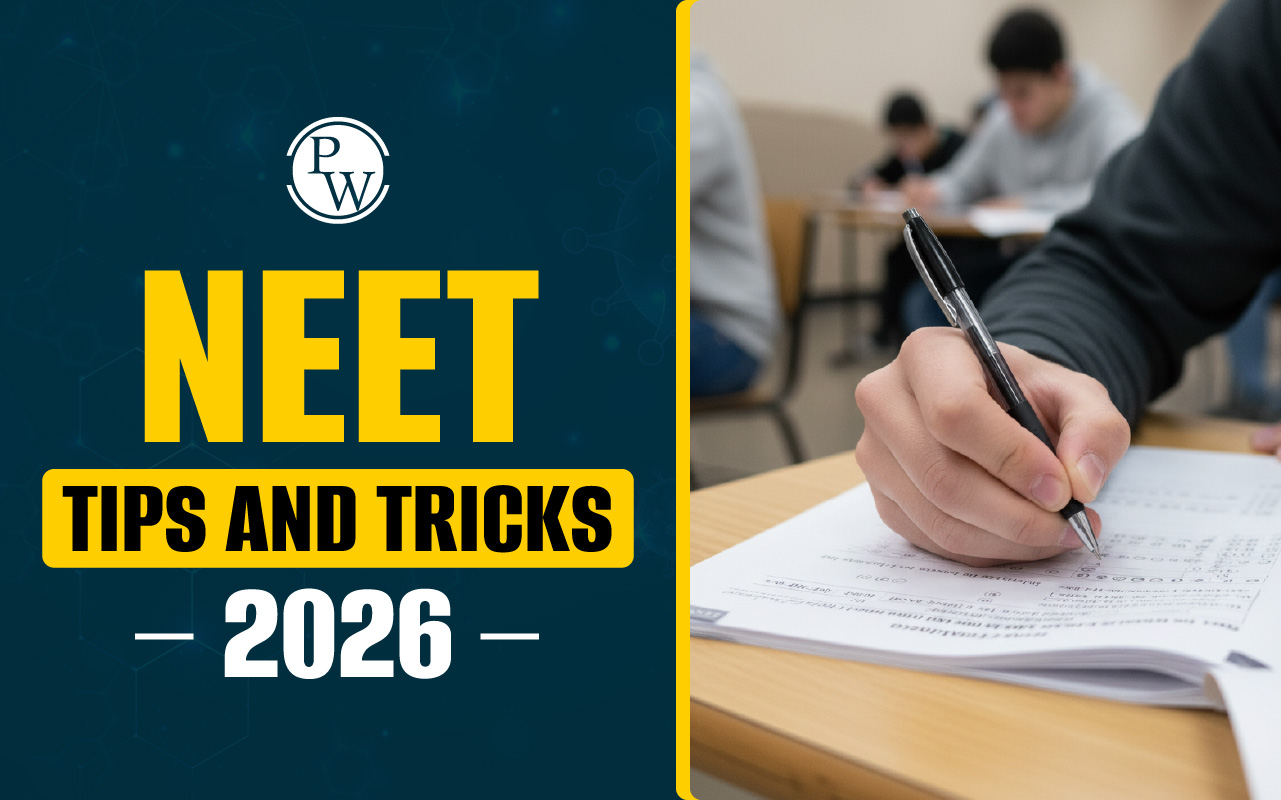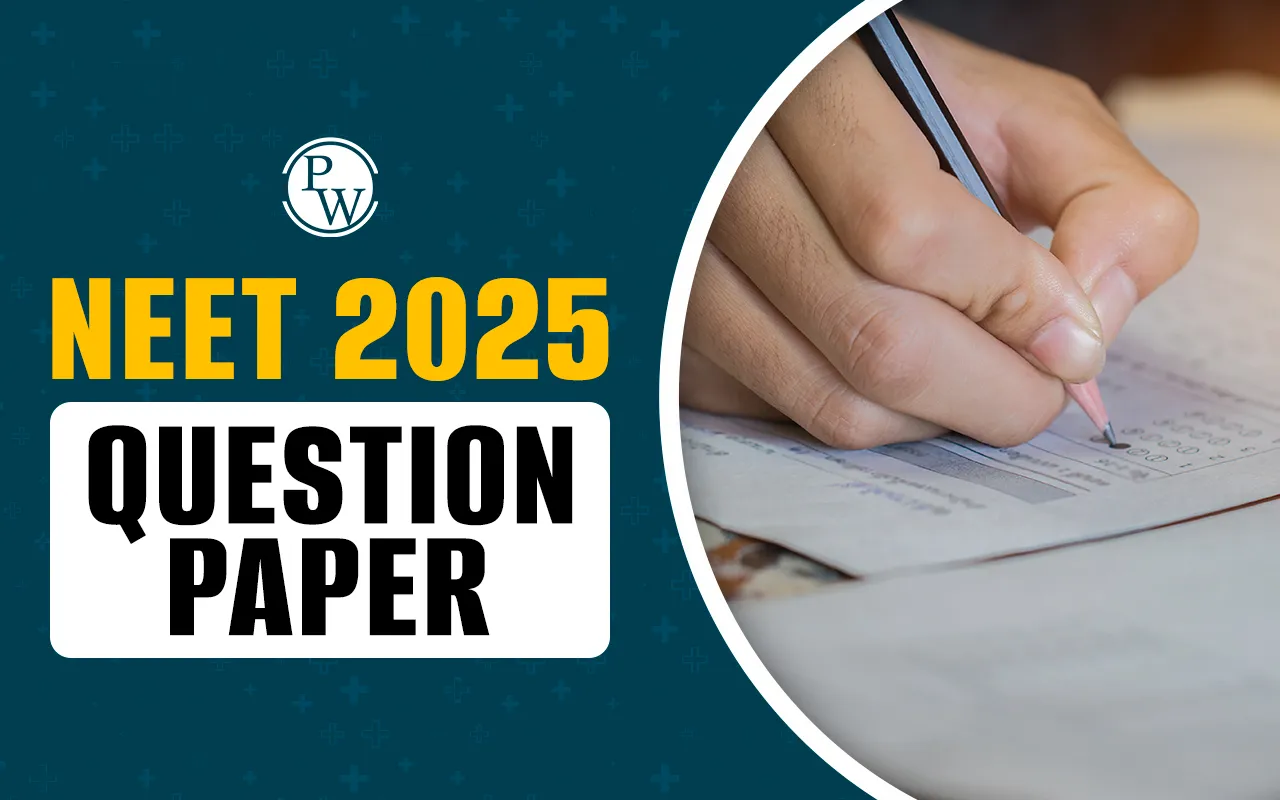
Some Basic Concepts of Chemistry MCQ: Some Basic Concepts of Chemistry is an important part of the Class 11 curriculum. For those preparing for the NEET exam, grasping these fundamental concepts is essential. Some Basic Concepts of Chemistry MCQ NEET provided are designed according to the NEET exam format, helping students become familiar with the types of questions they might face in NEET exam.
Practicing Some Basic Concepts of Chemistry NEET MCQ will enhance their understanding of basic chemistry, which is vital for achieving a good score in NEET. To aid in effective preparation, we have provided a thorough set of MCQs on " Some Basic Concepts of Chemistry " designed specifically for NEET and Class 11 Chemistry exams by experts.Some Basic Concepts of Chemistry MCQ NEET
Some Basic Concepts of Chemistry NEET MCQ is the foundation for many advanced topics in the subject. It is important for students to thoroughly understand these basics to do well in Class 11 exams and competitive exams like NEET. Some Basic Concepts of Chemistry MCQ Class 11 are valuable resources that offer easy access to a variety of questions, helping students prepare effectively.Also Check:
Some Basic Concepts of Chemistry MCQ with Solutions
To enhance learning, it is important to solve questions and understand the solution behind each answer. Some Basic Concepts of Chemistry NEET MCQs with Solutions provide solutions for each question. These solutions help clarify any doubts and ensure a thorough understanding of the fundamental concepts. By practicing these questions and reviewing the solutions, students can identify their weaknesses and focus on areas that need more attention.| NEET Chemistry Important Links | ||
|---|---|---|
| NEET Chemistry Syllabus | NEET Chemistry Notes | NEET Chemistry Chapter wise Weightage |
Some Basic Concepts of Chemistry MCQ Class 11
Some Basic Concepts of Chemistry MCQ Class 11 is created to cover all the important topics from the Class 11 Chemistry syllabus. These multiple-choice questions help students strengthen their understanding of classroom lessons and build a strong foundation for chemistry topics. Regular practice with these questions will help students grasp and remember key concepts for the NEET exam.1. Which of the following statements is/are true for pure substances?
- An element of a substance contains only one kind of atom.
- A compound can be decomposed into its components.
- All homogeneous mixtures are solutions.
- All of these
2. Which of the following is a solution?
- Heterogeneous mixture
- Homogeneous mixture
- Partially Homogeneous & Heterogenous
- Both (1) and (2)
3. When two or more atoms of different elements combine with each other in a fixed ratio, the molecule of _____ is obtained.
- A compound
- An elements
- An atom
- An ion
4. Air is a/an:
- Heterogeneous mixture.
- Element.
- Compound.
- Homogeneous mixture.
5. Which of the following mixtures is/are homogeneous?
- Tincture of iodine
- Smoke
- Brass
- Sugar solution
6. The number of significant figures in 0.06900 is:
- 5
- 4
- 2
- 3
7. Taking into account the significant figures, what is the value of 9.99 m –0.0099 m?
- 9.9801 m
- 9.98 m
- 9.980 m
- 9.9 m
8. Determine the number of significant figures in the following:
- 1005000 cm
- 1.005 g
- 0.000125 m
- 10000 km
- 0.02002 s
- 2002 mL
- 200.200 days
- 1005000 cm = 4
- 1.005 g = 4
- 0.000125 m = 3
- 10000 km = 4
- 0.02002 s = 4
- 2002 mL = 4
- 200.200 days = 6
9. How many significant figures are in the number 0.00150?
- 5
- 3
- 6
- 2
10. Calculate and give the answer with the correct number of significant figures. (0.05 + 0.123) × (1.02 + 0.9)
- 0.3321
- 0.332
- 0.3
- 0.33
11. The sum of the numbers 436.32,227.2 and 0.301 in appropriate significant figures is:
- 663.821
- 664
- 663.8
- 663.82
12. 2.34 is obtained by rounding off the number.
- 2.346
- 2.355
- 2.335
- 2.334
13. When energy is expressed in erg the number of significant figures is four. If it is expressed in joule the no. of significant figures will become?
- 9
- 5
- 1
- 4
14. What weight of BaCl2 would react with 24.4 g of sodium sulphate to produce 46.6 g of barium sulfate & 23.4 g of sodium chloride?
- 29.8
- 56.1
- 45.6
- 46.4
15. An unbalanced chemical equation is against the law of:
- The law of gaseous volumes
- The law of constant proportions
- The law of mass action
- The law of conservation of mass
16. All samples of carbon dioxide contain carbon & oxygen in the mass ratio of 3:8. This is in agreement with the law of:
- Conservation of mass
- Constant composition
- Multiple proportions
- Constant volume
17. In one sample of a compound of A and B, 2.50 gA combines with 8.00 g B. In another sample of a compound of A and B, 1.20 g of A combines with 3.84 g of B. These results illustrate:
- Law of conservation of mass
- Law of definite proportions
- Law of multiple proportions
- Law of gaseous volumes
18. A sample of pure carbon dioxide, irrespective of its source contains 27.27% carbon and 72.34% oxygen. The data support:
- Law of constant composition
- Law of conservation of mass
- Law of reciprocal proportions
- Law of multiple proportions
19. The law of definite proportions is not applicable to nitrogen oxide because:
- Nitrogen atomic weight is not constant
- Nitrogen molecular weight is variable
- Nitrogen forms multiple compounds with oxygen
- Oxygen atomic weight is variable
20. The oxides of nitrogen contain 63.65%, 46.69% & 30.46% of nitrogen by weight, respectively. This data illustrates the law of:
- Constant proportions
- Multiple proportions
- Law of gaseous volumes
- Conservation of mass
21. Cu forms two oxides cuprous and cupric oxides, which law can be proved by the weights of Cu and O?
- Constant composition
- Multiple proportions
- Reciprocal proportions
- Definite proportions
22. A sample of pure nitrogen dioxide, irrespective of its source contains 27.27% nitrogen and 72.34% oxygen. The data support:
- Law of constant composition
- Law of conservation of mass
- Law of reciprocal proportions
- Law of multiple proportions
23. The law of conservation of mass holds good for all of the following except.
- All chemical reactions
- Nuclear reaction
- Endothermic reactions
- Exothermic reactions
24. The % of copper and oxygen in samples of CuO obtained by different methods was found to be the same. This proves the law of:
- Constant Proportion
- Reciprocal Proportion
- Multiple Proportion
- Conservation of mass
25. “The total mass of reactants is always equal to the total mass of products in a chemical reaction”. This statement is known as:
- Law of conservation of mass
- Law of definite proportions
- Law of equivalent weights
- Law of combining masses
26. One sample of atmospheric air is found to have 0.03% of CO2 and another sample has 0.04%. This is evidence that:
- The law of constant composition is not always true
- The law of multiple proportions is true
- Air is a compound
- Air is a mixture
27. Avogadro’s law states an equal volume of gases that contain the same number of:
- Crystals
- Molecules
- States
- Pressure units
28. Which of the following represents Avogadro’s hypothesis?
- Equal volumes of all gases under the same condition of temperature & pressure contain an equal number of atoms
- Equal volumes of all gases under the same condition of temperature & pressure contain an equal number of molecules.
- Gases react together in volumes that bear a simple ratio to one another
- The rates of diffusion of gases are inversely proportional to the square root of densities
29. Assertion (A): At 273 K & 1 bar 22.4 L of both oxygen & CO2 contains an equal number of molecules.
Reason (R): According to Avogadro’s law, at a constant temperature & pressure equal volumes of all gases contain an equal number of molecules.
- Both Assertion (A) and Reason (R) are true & Reason (R) is the correct explanation of Assertion (A).
- Both Assertion (A) and Reason (R) are true but Reason (R) is not the correct explanation of Assertion (A).
- Assertion (A) is true but Reason (R) is false.
- Assertion (A) is false but Reason (R) is false.
30. Assertion (A): The law of conservation of mass isn’t explained in Dalton’s atomic theory.
Reason (R): Dalton said that the reorganization of atoms is involved in chemical reactions.
- Both Assertion (A) and Reason (R) are true & Reason (R) is the correct explanation of Assertion (A).
- Both Assertion (A) and Reason (R) are true but Reason (R) is not the correct explanation of Assertion (A).
- Assertion (A) is true but Reason (R) is false.
- Assertion (A) is false but Reason (R) is false.
31. Which idea about Dalton’s atom model is incorrect?
- Atoms are structureless.
- Atoms combine by sharing electrons.
- Atoms cannot be created nor be destroyed.
- Atoms combine in simple whole-number ratios.
32. Which of the following postulates of Dalton’s atomic theory explains the law of multiple proportions?
- Atoms of two elements may combine with one another to form more than one compound.
- Atoms combine in the ratio of small whole numbers to form compounds.
- The relative number and kinds of atoms are constant in a given compound.
- All of these
33. In water, the ratio of hydrogen to oxygen by mass is given as 1: 8. The mass of oxygen required for 5 g of hydrogen is?
- 10gm
- 20gm
- 40gm
- 5gm
34. Indium (atomic mass = 114.82) has two naturally occurring isotopes, the predominant one form has an isotopic mass of 114.9041 and an abundance of 95.72%.
Which of the following isotopic masses is most likely for the other isotope?
- 112.94
- 115.90
- 113.90
- 114.90
Excellent online courses are available for NEET applicants through Physics Wallah. The PW NEET Online Coaching Program provides cost-effective, top-notch instruction. The best instructors are offering exceptional online courses to assist you in getting ready for the NEET Exam.
Some Basic Concepts Of Chemistry MCQ FAQs
Q1. What is the smallest unit of an element that retains its properties?
Ans. The smallest unit of an element that retains its properties is atom.
Q2. What is the pH scale used to measure?
Ans. Acidity or alkalinity is used to measure the pH scale.
Q3. In a chemical equation, what do the coefficients represent?
Ans. Number of atoms is the coefficients represent.
Q4. What is the chemical symbol for gold?
Ans. The chemical symbol for gold is Au.
🔥 Trending Blogs
Talk to a counsellorHave doubts? Our support team will be happy to assist you!

Free Learning Resources
PW Books
Notes (Class 10-12)
PW Study Materials
Notes (Class 6-9)
Ncert Solutions
Govt Exams
Class 6th to 12th Online Courses
Govt Job Exams Courses
UPSC Coaching
Defence Exam Coaching
Gate Exam Coaching
Other Exams
Know about Physics Wallah
Physics Wallah is an Indian edtech platform that provides accessible & comprehensive learning experiences to students from Class 6th to postgraduate level. We also provide extensive NCERT solutions, sample paper, NEET, JEE Mains, BITSAT previous year papers & more such resources to students. Physics Wallah also caters to over 3.5 million registered students and over 78 lakh+ Youtube subscribers with 4.8 rating on its app.
We Stand Out because
We provide students with intensive courses with India’s qualified & experienced faculties & mentors. PW strives to make the learning experience comprehensive and accessible for students of all sections of society. We believe in empowering every single student who couldn't dream of a good career in engineering and medical field earlier.
Our Key Focus Areas
Physics Wallah's main focus is to make the learning experience as economical as possible for all students. With our affordable courses like Lakshya, Udaan and Arjuna and many others, we have been able to provide a platform for lakhs of aspirants. From providing Chemistry, Maths, Physics formula to giving e-books of eminent authors like RD Sharma, RS Aggarwal and Lakhmir Singh, PW focuses on every single student's need for preparation.
What Makes Us Different
Physics Wallah strives to develop a comprehensive pedagogical structure for students, where they get a state-of-the-art learning experience with study material and resources. Apart from catering students preparing for JEE Mains and NEET, PW also provides study material for each state board like Uttar Pradesh, Bihar, and others
Copyright © 2025 Physicswallah Limited All rights reserved.
Get App









